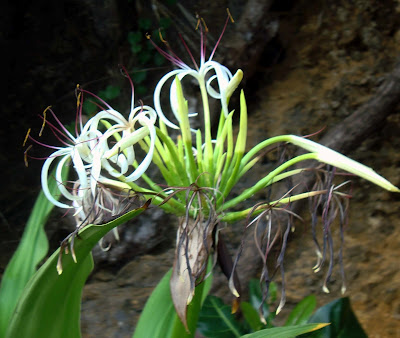Practical Technology with Nature
Rice Hull (ipa) ash protects mungbeans
from bean weevil
Dr Abe V Rotor
Living with Nature School on Blog
Upper photos, mungbean (Vigna radiata L.) showing the extent of infestation by the bean weevil. Closeup of the weevil, and stages of its life cycle. Mungbean is one of the most important edible legume crops, grown on more than 6 million hectares worldwide and consumed by most households in Asia. Its nutritional value is very high, not only as staple food, but ingredients of a wide variety of food preparations, its health benefits notwithstanding.*Burnt rice hull (ipa) contains silica crystals that are microscopic glass shards capable of penetrating into the conjunctiva of the bean weevil (Callosobruchus maculatus). Once lodged, the crystal causes more damage as the insect moves and struggles, resulting in infection and desiccation, and ultimately death.
This is the finding of Ethel Niña Catahan in her masteral thesis in biology at the University of Santo Tomas. Catahan tested two types of rice hull. One is partly carbonized (black ash) and the other oven-burned (white ash).
Both are applied independently in very small amount as either mixed with the beans or as protectant placed at the mouth of the container. In both preparations and methods, mungbeans - and other beans and also, cereals, for that matter - can be stored for as long as six months without being destroyed by this Coleopterous insect.
The bean weevil is a cosmopolitan insect whose grub lives inside the bean, eating the whole content and leaving only the seed cover at the end of its life cycle. When it is about to emerge the female lays eggs for the next generation. Whole stocks of beans may be rendered unfit not only for human consumption, but for animal feeds as well. It is because the insect leaves a characteristic odor that come from the insect's droppings (frass) and due to fungal growth that accompanies infestation. ~
--------------------------
*Mungbean Nutrition facts
Sources include: USDA
Mung beans, raw
347 Calories - 100 grams
Nutrient Amount(g) DV(%)
Total Fat 1.2 g 1%
Cholesterol 0 mg 0%
Sodium 15 mg 0%
Potassium 1,246 mg 35%
Total Carbohydrate 63 g 21%
Protein 24 g 48%
Percent Daily Values are based on a 2,000 calorie diet. Your daily values may be higher or lower depending on your calorie needs. Acknowledgement with thanks: Internet photos
Reference: Living with Folk Wisdom, AV Rotor (UST Publishing House 2008


































